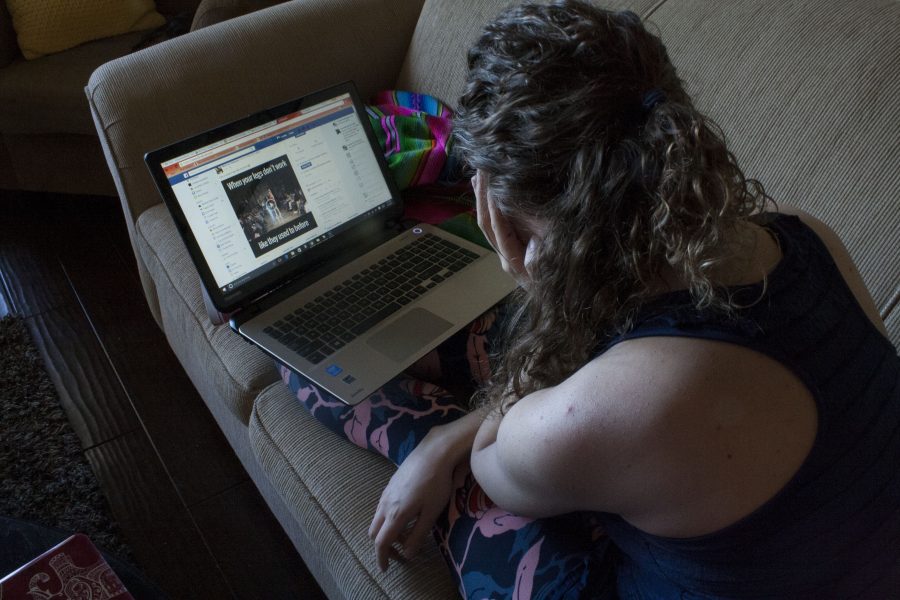Obsessing over editing photos can be easy with all the applications now available. Some social media editing programs claim that they can do anything from clearing blemishes to whitening teeth to shaving off a few pounds, all in the name of that perfect Instagram. For some users, a body image problem exists when filtered Instagram feeds become reality in some students.
The average American woman is 5 feet 4 inches tall and 166 pounds, according to research that is used nationally by the University of Texas at Austin. In contrast, most female models are 5 feet 11 inches, and usually wear a size double zero to zero at around 107 pounds. The average American man is a size 44 waist, as opposed to the average male model’s size of 40 waist. Although research has shown that women are the most adversely affected by defecting from this mold, men are not exempt from an inadequate physical representation in the media.
Michael (whose name has been changed), a sophomore majoring in accounting, said social media also plays a role in a man’s security.
Non-inclusive sizing of models isn’t new; certain body types have been used throughout history to market products and catch consumer’s attention. Social media, however, is changing the way this new “normal” affects our psyche. The general population has more access to quick information than ever before. Previously, media platforms included newspapers, television, and fashion magazines. Cell phones now have the ability to always accompany their owners and function as stand-in advertisements.
“Body image is something I’ve struggled with since I was young,” said Ramsey Griffin, a junior majoring in studio art. “In a media-heavy society, I feel that it would be hard not to struggle with body image.”
Griffin said she first began to have problems with body image in her youth.
“When I was much younger, I often said very hurtful things to myself about the way I looked,” Griffin said. “Truthfully, I still struggle with this.”
Griffin is not alone. More and more children are becoming sucked into the glitz and glamour of social media, and the ages that children are beginning to experience discomfort with their bodies is lowering— the Park Nicollet Melrose Center, a clinic that specializes in treating dysfunctional body image and eating disorders, said that this may have a direct correlation to the amount of time spent using social media. In a study called Body Image Issues among Girls and Women, 20 percent of 9-year-olds and 40 percent of 14-year-olds admitted to wanting to lose weight. The same study found that half of the sampled girls ages six to eight also wanted to be slimmer. Many of the same girls who wished to be thinner were within the normal weight range for their ages.
Michael said he notices tiny imperfections after scrutinizing his appearance.
“My eyelids are uneven and my nostrils aren’t shaped the same. The left one is closed more than the right one is. Those are the big ones.”
Since most online social media is relatively new, few long-term studies have been conducted on its effects on the human mind. The studies that have been conducted report similar findings— adolescents that spend much of their time on social media tend to develop unrealistic expectations for their bodies.
Griffin said she stays positive, especially with her social media.
“The root of insecurity is comparison. I try to avoid comparing myself, my work, and my image with others’,” said Griffin. “One thing that boosts my confidence is staying positive, and only leaving positive comments on others’ posts. When you produce positivity, positivity tends to come back to you.”
Griffin hopes that one day the media’s view of beauty will expand into something more representative of more individuals.
“With more and more body-positivity accounts and movements gaining momentum in the social media, I think it’s only a matter of time until our universal definition of beauty dissipates and is replaced with a broader idea of beauty.” Griffin said. “I like to focus on seeing the beauty in the people and things around me, and I want that to be infectious.”







